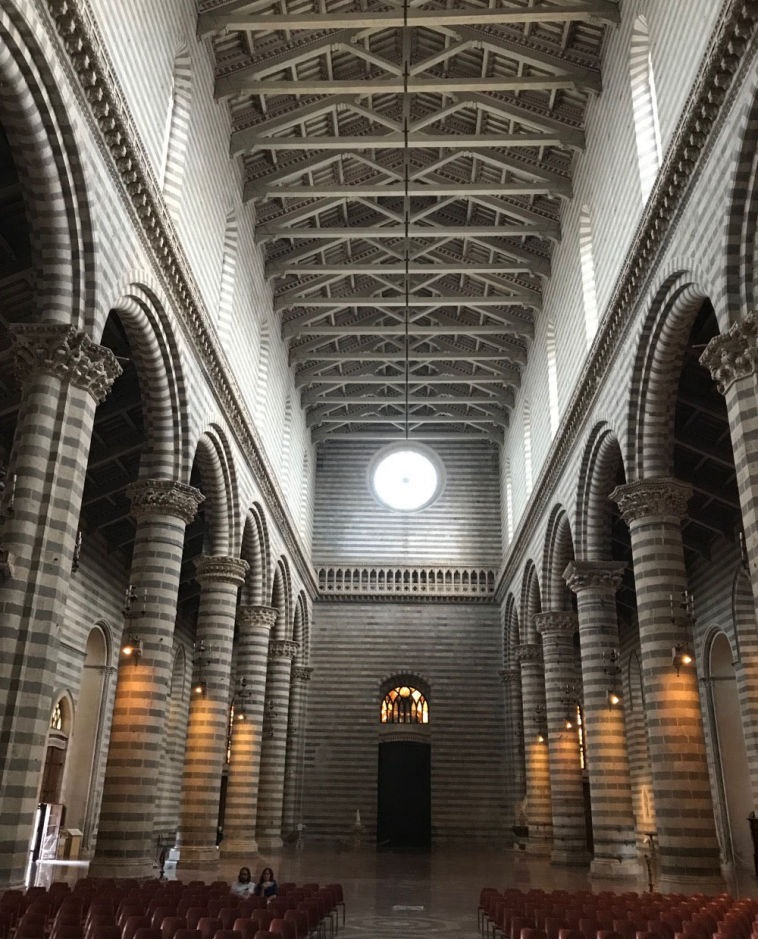A symbol of the city itself, the Duomo is one of the most beautiful in Italy.
The construction began in 1290, with the support of both the Catholic Church and the city. The intent was to create one large cathedral for the city, to replace two decaying churches that existed there before. It should also be noted that the delightful story of the event of the Miracle of Bolsena encouraged the construction of the Duomo.
The Duomo is a magnificent building that brings together different architectural styles. In particular we can define a fine example and balance of Gothic and Romanesque styles. There were many people who participated in the various phases of design and construction.
On the facade of the cathedral
The four cathedral pilaster have large marble bas reliefs, each representing images and stories of a religious nature:
The first relief depicts stories of the Old Testament with images depicting the history of Genesis. These are scenes that trace the days of creation (creation of animals and plants) and the birth of Adam and Eve. Other scenes in this pilaster depicting Eden, the original sin, the divine condemnation and symbolic presentation of Cain slaying Abele.
In the second relief we have the Tree of Jesse, with the genealogy of the descendants of Jesus and Messianic prophecies and scenes with Abraham, King David, Solomon and the Crucifixion.
In the third relief are the gospel stories narrated in the New Testament, with scenes of the activity of Christ, the Nativity and the Annunciation. Other scenes in particular the massacre of the innocents, the kiss of Judas, the scourging of Christ and Mary at the holy sepulcher.
In the fourth relief it is represented a recurring theme in the arts representational works of the Cathedral: the Last Judgement. Images of the damned and the elect, the resurrection of the dead. The same theme is beautifully represented in painting the frescoes by Signorelli in the Chapel of San Brizio with apocalyptic scenes and the resurrection of the body.
The interior
The interior of the Duomo also houses masterpieces of sculpture as well as painting. Among the most important works, the statue of the Pietà (or Deposition) by Ippolito Scalza, a work created from a single block of marble that represents, with great drama, the moment of the deposition of Christ. From the year 2019 the return of the statues that for years have been exhibited at the former church of Sant’Agostino has been completed and that today they are again positioned inside the cathedral after that at the end of the 800, they were removed following the important restorations. On the sides of the high altar, you can admire the two statues of the sculptural cycle of the Annunciation made by Francesco Mochi in the early 600s. The two sculptures have a great artistic importance, in particular, the statue of San Gabriele Arcangelo Annunciante (1603) has been recognized by various scholars, as the first baroque statue in history.
The statue of the Madonna announced was carved in 1608. The two statues are closely related to each other in meaning and message.
Recommend that you visit the cathedral. You can buy tickets in the tourist office on the square in front of the Duomo.
Link to wikipedias article on the Orvieto Duomo.

Amazing architecture.
The address is not disclosed here, so you will have to see if you can find the Duomo when you have "climbed" your way to the top of the tufo rock ;-)